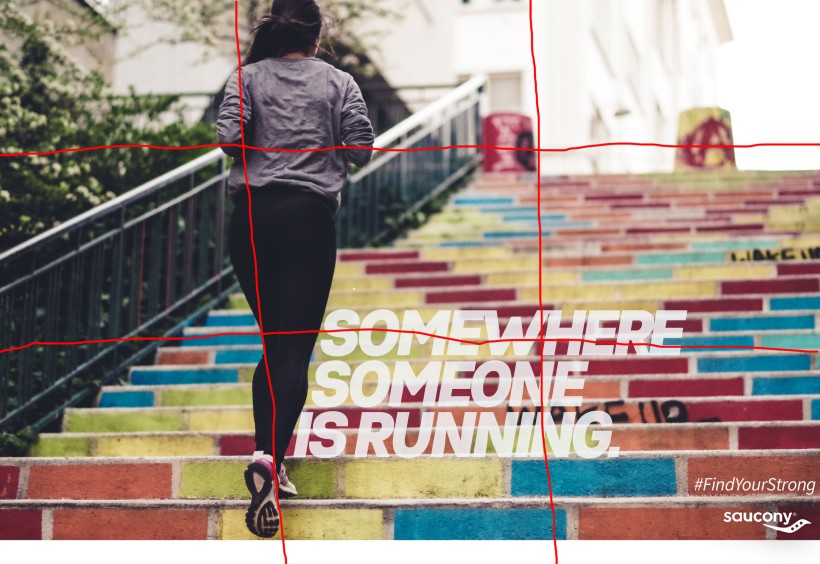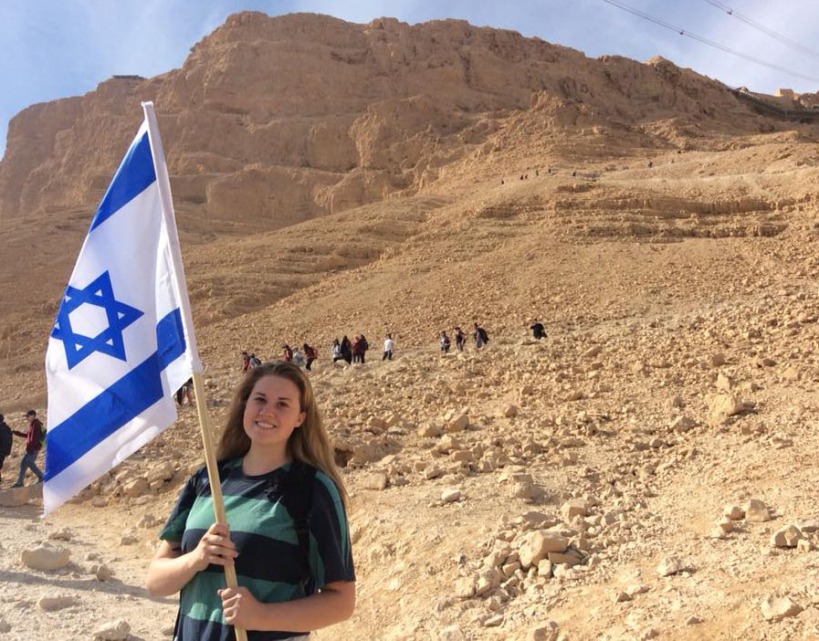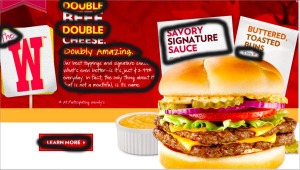I love Running in Sauconys! This is definitely just a personal preference, but my feet still feel brand new when I get back from my run. Does it get better than that? Apparently it does, because their ads are just as flawless as their shoes! I created an ad that I thought would go really well in the same ad campaign.
Here’s the original:

That person running might be me. And it might be in the middle of nowhere!
I found this ad at:
They have lots of Saucony advertisements you can find when you Google search them. I claim fair use to use this ad in my article today.
The Design

The design of this article shows alignment, repetition and proximity. The alignment is evident when you imagine the rule of thirds on it. Those lines draw our focus to the woman’s face and the words on the bottom right. There is repetition in the recurring whiteness of the words, logo, lights, and shoes. The proximity is strong because you can see how even though everything is close together, none of the wording or body parts or wall fixtures overlap. They all have their own space.
The Colors

The colors are strong and bold. This ad stands out as you are flipping through a magazine because it is dark and bright at the same time. There are dark edges showing the lateness of the hour, but the light and bright pink she is wearing make her stand out against the darkness.
The Typography

The Typography is genius! The main wording follows the line of the woman’s leg. It draws your eyes to the words even though they are just white. The white accents the picture well though as I mentioned before. The hashtag before “FindYourStrong” give it an edgy and modern feel.
My Ad

My ad is very similar in style to Saucony’s ad. I found the same logo to use, used the same wording, and the idea that people could be running anywhere around the world. It is an encouraging thought!
The Design

My design also follows the rule of thirds. I wanted a photo that would draw your attention to the runner and the typography and let your mind forget the rest of the photo until you focus on it. The wording again follows the woman’s leg, even though her leg is pointed the other direction. It doesn’t draw your eye to the words as well, but it has the same idea. There is the same repetition in the color of the wording, logo, stairs, and shoes. Proximity is strong again as you notice how well the lines from the stairs blend with the rest of the picture.
The Colors

There are a lot more colors in this ad, but the main one is still the white color. You see the white in the sky, in the wording, on the shoes, on the railings, and on the stairs. The bright colors are again what would attract a magazine reader to this page. She contrasts by wearing those dark clothes. That is why it works so well!
The Typography

I used all the same wording and found very similar fonts in order to match the original ad. I did move the hashtag and the logo to the side of the screen so it wouldn’t get washed out by the light colored stairs. I think it is more important to keep the color than the location.
Conclusion
Basically, these two ads motivate the same thing: run no matter where you are! You can gain that motivation by getting a decent brand of running shoes.
Thanks Saucony. ❤













